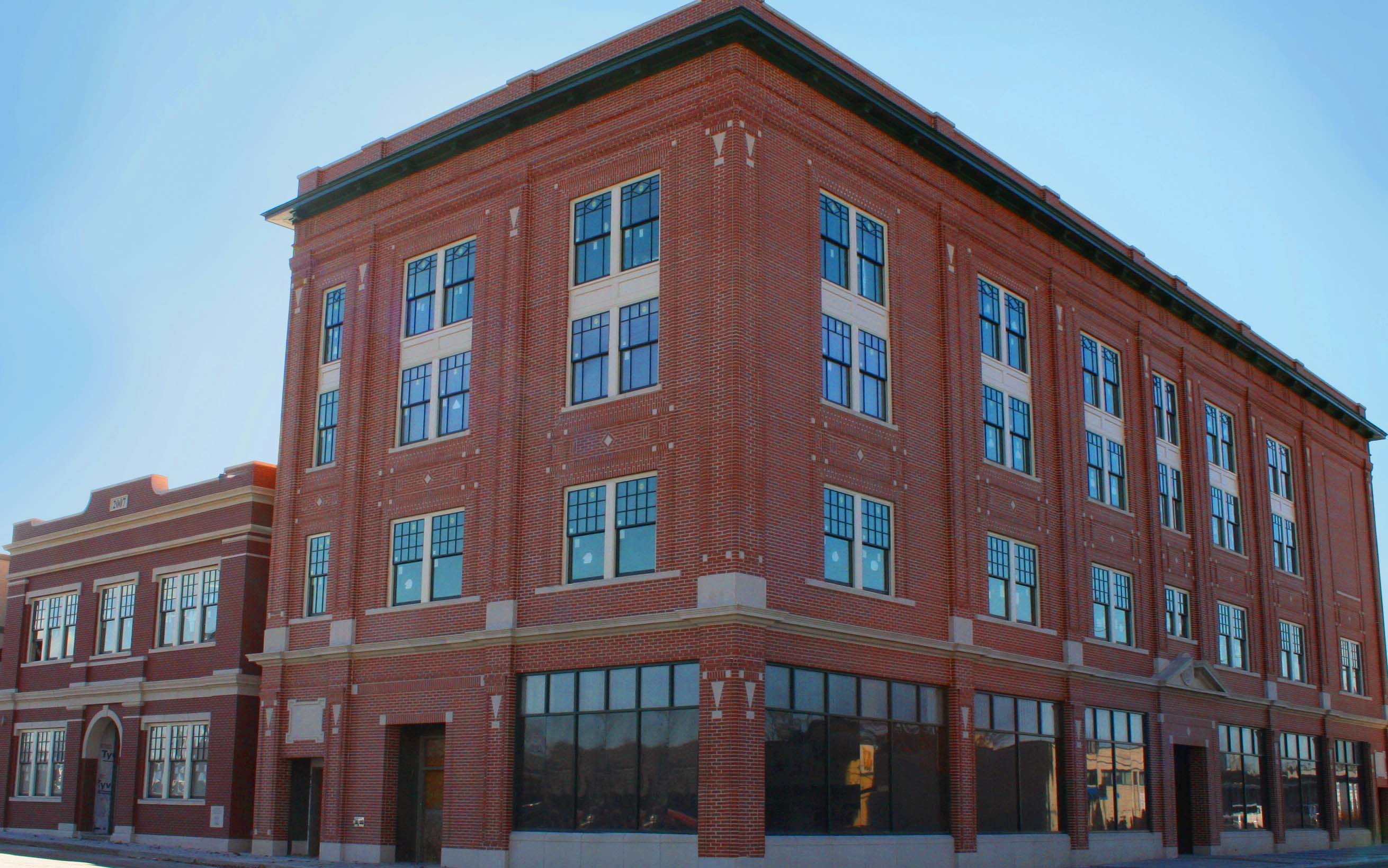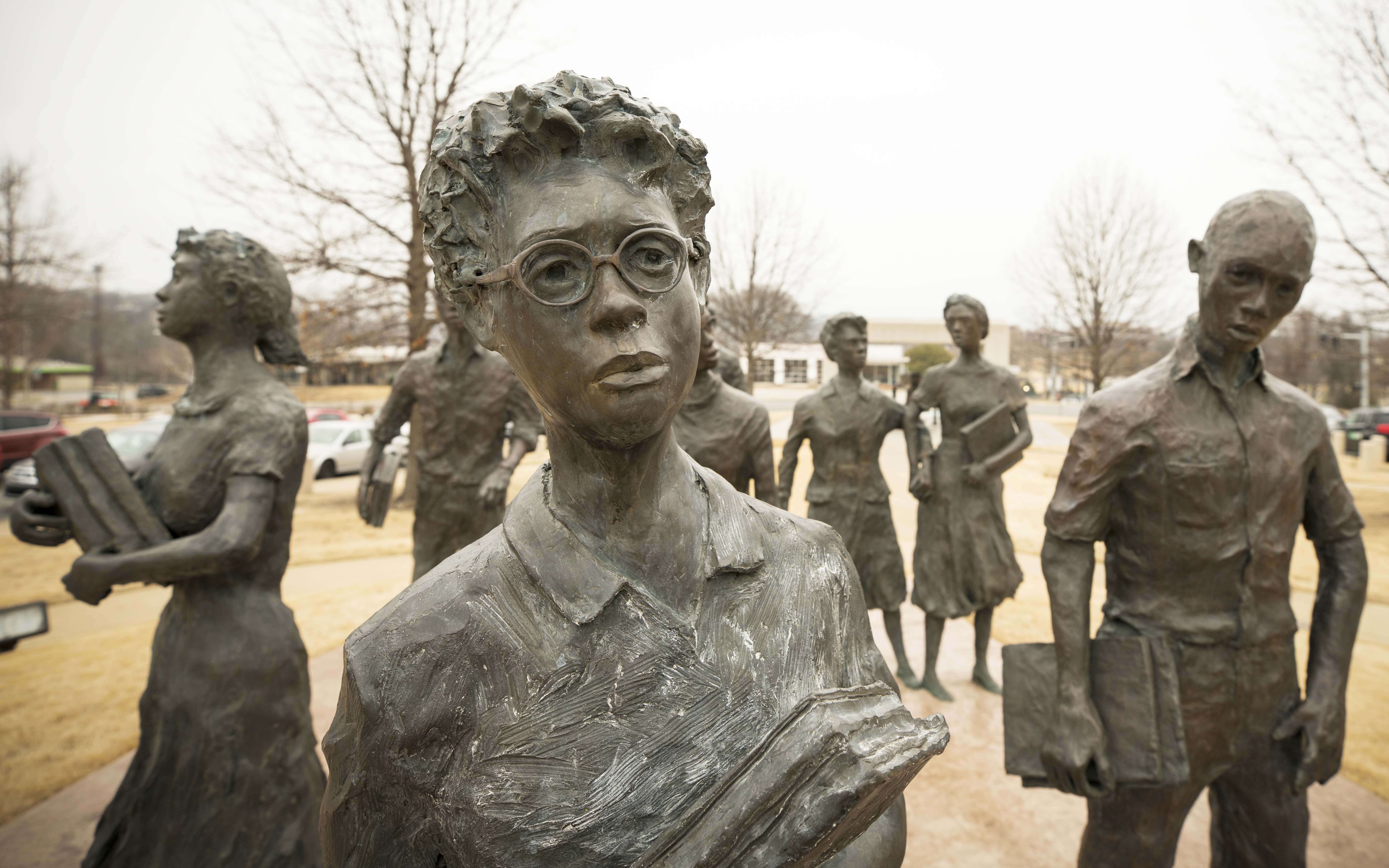Bates house, Little Rock Central among landmarks on new U.S. Civil Rights Trail
February 5-11, 2018
By Jay Edwards
It may be difficult for the generation known as the baby boomers to get their minds around the fact that it was a half century ago this April that Martin Luther King was assassinated. The end of a dream, burned into memories forever by the black and white photo of a balcony at the Lorraine Motel in Memphis, Tennessee, where Dr. King lay mortally wounded as people standing above him pointed at the spot on a rooftop across the parking lot where they believed the shots came from.
What’s more, could it really have been 55 years ago that four little girls were killed by a dynamite blast, as they got ready for a worship service on Sunday morning at the 16th Street Baptist Church in Birmingham, Alabama?
And, closer to home, where did the past 60 years go, when Little Rock Central High School and its surrounding neighborhoods were the center of the universe in the fight against segregation, showcasing the courage of nine brave students as they took those long steps to equality through education?
It is in these three, well-known southern cities, along with 43 others, that over 100 historical landmarks will be showcased in what now makes up the new U.S. Civil Rights Trail.
Gretchen Hall, President & CEO of the Little Rock Convention & Visitors Bureau, said last month at a press conference regarding the trail, “The trail’s theme is, ‘What Happened Here, Changed the World.’ And indeed it did. These sites highlight and showcase the stories, struggles and triumphs that have shaped humanity.”
On Sept. 25, 1957, the hallways at Little Rock Central High School had already been busy with student activity for three weeks. But nine of the students enrolled had yet to make it past the front doors. They were to be the school’s first black students; they were going to make history. But a mob of angry people, with support from the Arkansas Governor and his National Guard, had different ideas.
Three years earlier, in Brown v. the Board Of Education, the U.S. Supreme Court ruled that segregation in schools was unconstitutional, but some cities, like Little Rock, refused to comply.
President Dwight Eisenhower was outraged. “Mob rule cannot be allowed to override the decisions of the courts,” he said in a televised speech on Sept. 24. He followed up the announcement with action the next day by sending 1,200 soldiers from the 101st Airborne Division to protect the black students.
Today, the north side of the Little Rock Central campus is bordered by Daisy L. Gatson Bates Drive, named for the civil rights activist who, along with her husband L. C. Bates, resided at 1207 West 28th Street during the crisis at the school. The house served as a haven for the nine students and is another stop along the new trail.
The month following the nines’ entrance into the high school, Bates and others associated with the NAACP were arrested. Bates voluntarily surrendered herself to the police and was released on bond. They were charged with violating the Bennett Ordinance (enacted two weeks prior) that required any organization, on request by any elected official, to supply information regarding its membership, donors, amount of contributions, and expenditures. Bates was singled out for “special treatment” and found two crosses burning on her property. The Bates’s also had a rock thrown into their living room window – barely missing Daisy – and shots were fired at their home. After the school year ended, segregationists hung a likeness of Daisy Bates in effigy in Ouachita County and an incendiary bomb was thrown onto her property where it burned itself out. After that bomb was thrown, Bates telegraphed the United States Attorney General the following message:
“Last night, July 7, 1959, at 10:08, a bomb hurled from an automobile exploded in our front yard. The bomb fell short of its target and only the lawn was damaged from the explosion which rocked dwellings for several blocks. As advisor to the litigants in the Little Rock school case, my home has been under constant attack since August 1957 by lawless elements of this state, and many threats have been made upon my life and the lives of my immediate family. Incendiary bombs have been thrown at our home from automobiles. Three KKK crosses have been burned on our lawn. Fire has been set to the house on two occasions. All the glass in the front of the house has been broken out and steel screens had to be made to cover the front windows to protect our home. To this date, no one has been apprehended by the law enforcement officers of this city or state. We have appealed to the city and county for protection. Yet these attacks on us and our home continue. We have been compelled to employ private guards. Now as a last resort, we are appealing to you to give us protection in Little Rock, United States of America.”
Assistant Attorney General W. Wilson White replied two days later, indicating that no assistance was to be given to Bates. His response highlights the need for civil rights legislation:
“The Attorney General and I have read the distressing account in your telegram of July 8, 1959, of the harassment which you have suffered since the institution of the Little Rock School desegregation case, culminating in the explosion of a bomb on July 7. After careful consideration, however, we are forced to conclude that there is no basis for federal jurisdiction. Any investigation and prosecution of persons responsible for the incidents which you described in your telegram would be within the exclusive jurisdiction of state and local authorities. Inability or failure on the part of such authorities to take effective action does not authorize the federal government to intervene. This department can take action only when there has been a violation of federal law. The information which you furnish in your telegram fails to disclose any such violation.”
Although well known in the black community, Daisy Bates came to the attention of white Arkansans as a civil rights advocate in 1956 during the pre-trial proceedings of the federal court case, Aaron v. Cooper, which set the stage for the 1957 desegregation.
The case was filed for the purpose of enforcing the rights of black children in Little Rock to attend schools with whites in accordance with the Supreme Court’s decision in Brown. Questioned by Leon Catlett, an attorney for the Little Rock School Board, Bates refused to allow herself to be called by her first name. She told the attorney, “You addressed me several times this morning by my first name. That is something that is reserved for my intimate friends and my husband. You will refrain from calling me Daisy.” Without hesitating, Catlett shot back, “I won’t call you anything, then,” to which Bates responded, “That’s fine.”
L.C. Bates died in 1980. In April of 1984, Daisy revived their newspaper publication, the Arkansas State Press. She sold the paper in December 1987 but remained on as a consultant. Daisy Bates died on Nov. 4, 1999 and received the honor of lying in state on the second floor of the Arkansas State Capitol building – the same structure where her nemesis, Governor Orval Faubus – spoke against integration.
To see an interactive map of the U.S. Civil Rights Trail, visit their website civilrightstrail.com.
Sources: civilrightstrail.com and the National Park Service
PHOTO 1 CAPTION:
With more than 100 locations across 14 states, the fight for American Civil Rights spanned cities and decades. Explore the Little Rock Landmarks that appear on the newly unveiled U.S. Civil Rights Trail. (Photo by Bobby Burton.)
PHOTO 2 CAPTION:
Located on 801 West 9th Street in Little Rock, The Mosaic Templars Cultural Center (MTCC) was established in 2001 with the mission of telling the stories and honoring the experiences of African-Americans in Arkansas. (Photo Courtesy of the Mosaic Templars Cultural Center)




